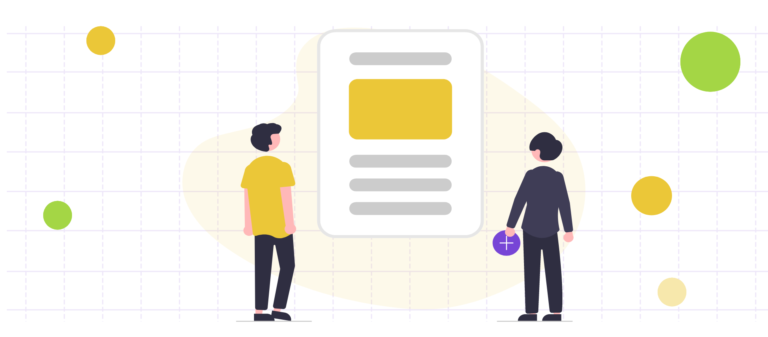A Nonprofit Guide to Creating and Using Logic Models

What if you had a more straightforward and systematic approach to sharing your organization’s progress and communicating impact? What if there’s a better way to meet your nonprofit’s goals, achieve outcomes and measure success? Imagine having a system in place for keeping donors and funders engaged.
A comprehensive logic model and an adaptive theory of change framework are the solutions to these and many more age-old nonprofit organizational challenges.
Donors and funders want clarification of the relationship between their contributions and the activities, outputs, and anticipated outcomes of your campaigns. With a logic model and theory of change, you can map out the connection between your work and your projected outcomes and report on the progress you’re making as an organization.
What is a Logic Model
A logic model is a visual representation of your nonprofit’s planned programming. It is a road map of how you and your team intend to achieve your desired outcomes using defined resources and strategies.
Your nonprofit logic model also allows you to communicate your performance measurements specifically and clearly. With a single sheet, stakeholders and funders can see the initiatives, investments, enablers, duties performed by staff and volunteers, and other activities involved in developing your nonprofits as well as the immediate impact of each of them.
On the other hand, the theory of Change helps you visualize the connections between your nonprofit’s leadership development, organizational capacity, and collective intention to contribute to specific outcomes.
Think of it this way: your logic model describes what you expect to achieve as a result of your inputs, while your theory of change map shows why your inputs will lead to your intended outcomes.
Together, these frameworks will ultimately shape how your organization conducts hiring and developing staff, identifying and assessing opportunities, and designing and delivering new programming.
How to Design Your Nonprofit’s Logic Model
A logic model is typically a one-page visualization that briefly describes your nonprofit organization’s challenges, inputs, activities, outputs, and outcomes. It is typically designed as a table outlining your pathway to success.
To help you get started on designing your nonprofit’s logic models, here are four steps to keep in mind:
- Identify your nonprofit’s priorities: Start by defining your organization’s mission, vision, values, and needs assessment. Think about your current challenges and note the overall impact you intend to have over a given period.
- Assess your current inputs: Your nonprofit’s inputs are the resources you put into a program, campaign, or intervention. These resources can be financial, grants, personnel, office materials, etc. Think about the investments you need to make to achieve success over a defined period.
- Define your outputs: Outputs are also known as activities and participation. These are the events that need to happen or the tasks that need to be performed by your team to produce your desired outcomes (e.g., conducting workshops, delivering services, and developing products). You should also indicate the required level of participation and contributions of donors, volunteers, board members, partners, and external agencies.
- Determine your outcomes: Outcomes are your nonprofit’s desired results over a period or at the end of a program or campaign. There are three types of outcomes:
- Short-term outcomes: These are the immediate effects of the program, campaign, or activities. They often depend on the knowledge and attitudes of the intended audience, i.e., donors and supporters. This can include increased brand awareness or changes in attitudes and behaviors towards your organization.
- Mid-term outcomes: These outcomes are the bridge between the short-term and long-term outcomes. For example, they can include the actions that donors and supporters take after gaining more knowledge and awareness about your organizations or programs.
- Long-term outcomes: These outcomes refer to the long-lasting changes or impacts of your activities. They are directly connected to your short-term and mid-term outcomes and usually occur in the aftermath of both. Typically, they include social, economic, civic, or environmental changes that affect your nonprofit’s beneficiaries.
Once you’ve taken the steps mentioned above, you can start mapping out your program’s progress over time. Remember, the logic model can be used throughout the lifecycle of any program. It is never too late to introduce a logic model.
- Planning Stage: Your nonprofit’s logic model can help identify gaps in the program’s logic and define roles and responsibilities for your staff and volunteers.
- Implementation Stage: Use your logic model to manage and maintain accountability for the activities or areas identified. This way, you can ensure your program stays on track and progresses timeline, which can be shared with board members, donors, and foundations.
- After Completion: You can use your logic model as a reference for your nonprofit organization’s future programs, projects, and campaigns. Use it to identify your team’s strengths, and weaknesses and understand your capacity to reach your goals.
How to Use Logic Models In Your Nonprofit Organization
As you create your logic models, you should ensure your team members are aware of their roles and the progress you’re making as an organization. Over time, use the model to evaluate the program’s vision, goals, and impact and communicate your findings to your team and stakeholders. This will help keep all parties aligned and committed to your mission.
Logic models and evaluation plans condense information so that donors and funders can see how their funding is being used. As such, they can boost donors’ desire to continue to fund your campaigns. This systematic approach provides a clear pathway for strategic decisions and organizes information useful in receiving donations and funding.
For more information about logic models and an adaptive theory of change, please contact The Mark USA’s VP of Business Development, Dr. Benjamin Kohl, at [email protected].
.svg)



